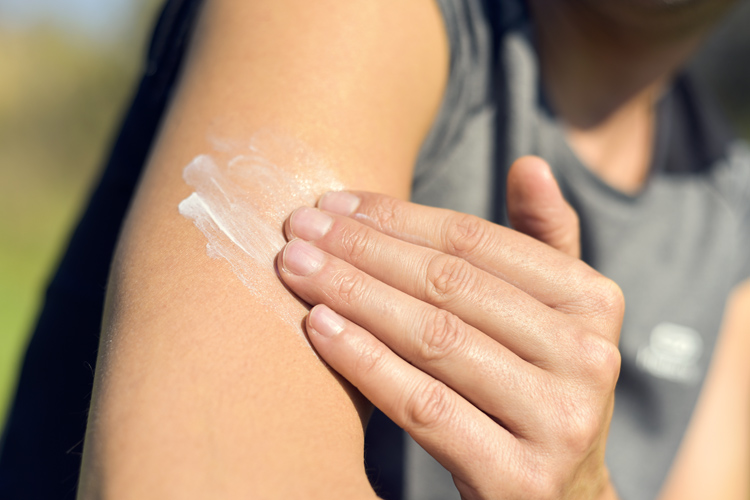For many historians, Coco Chanel is responsible for setting a new tan fashion. In 1923, she returned from a Mediterranean cruise looking bronzed, and the trend stuck.
In Western societies, and 100 years later, people still associate beauty with tanning. But make no mistake: tanned skin always means damaged skin.
Dermatologists and scientists say there is no such thing as a healthy or safe tan. There is a real, scientifically proven link between ultraviolet radiation and skin cancer.
Unfortunately, with the advent of indoor tanning beds and spray tans, getting golden skin and a sun-kissed look became a worldwide addiction.
But it also resulted in more cases of melanoma in younger generations.
The Effects of Tanning
The risks and effects of tanning include premature skin aging, skin cancer, wrinkles, actinic keratosis, eye damage, and a weakened immune system.
With tanning, the skin tends to get darker as a result of moderate-to-prolonged exposure to ultraviolet (UV) radiation from sunlight.
While moderate exposure to the sun can contribute positively to the production of vitamin D and melanin by the human body, excessive exposure can quickly lead to sunburn and, in many cases, to skin cancer.
The Fitzpatrick Scale classifies the colors of the human skin and estimates the response of different types of skin to UV light.

Type I / Very Light or Pale
A skin type that always burns and never or only occasionally tans.
Type II / Light or Light-Skinned
A skin type that usually burns and sometimes tans.
Type III / Light Intermediate
A skin type that sometimes burns mildly and usually tans uniformly.
Type IV / Dark Intermediate
A skin type that rarely burns and always tans well.
Type V / Dark or "Brown"
A skin type that very rarely burns and tans very easily.
Type VI / Very Dark or "Black"
A skin type that never burns.
We know that the sun provides us with the vitamin D we need and some of us can't avoid surfing and go to the beach during the summer holidays.
But the sun kills silently, and we must defend our skins from the star's invisible strikes.
To protect your skin from harmful UVA and UVB rays, limit your exposure to sunlight, use appropriate sunscreen, and wear polarized sunglasses, hats, and protective clothing.
Humans can get the daily dose of vitamin D they need with between five and 15 minutes of sun exposure, and they only need to do it two to three times a week.
It corresponds to, for example, walking for ten minutes under the sun right after lunch. And that's enough.

Statistics Are Shockingly Revealing
According to the Skin Cancer Foundation, there are more Americans diagnosed with skin cancer every year than all other cancers combined.
Also, one in five US citizens will develop skin cancer when they reach 70. Need more evidence? Actinic keratosis, an early stage of skin cancer, affects more than 58 million Americans.
Sun rays cause ninety percent of skin aging problems, and people who apply a good sunscreen with a sun protection factor (SPF) of 15 or higher on a daily basis show 24 percent less skin aging than those who do not use sunscreen every day.
So, next time you're out for a surf session under a blazing sun or walking with children, make sure you protect yourself and others from the UV attack.
Remember that the worst time of the day for a sunburn is from approximately 10 am until 4 pm. During that period, choose life: stay in the shade.
